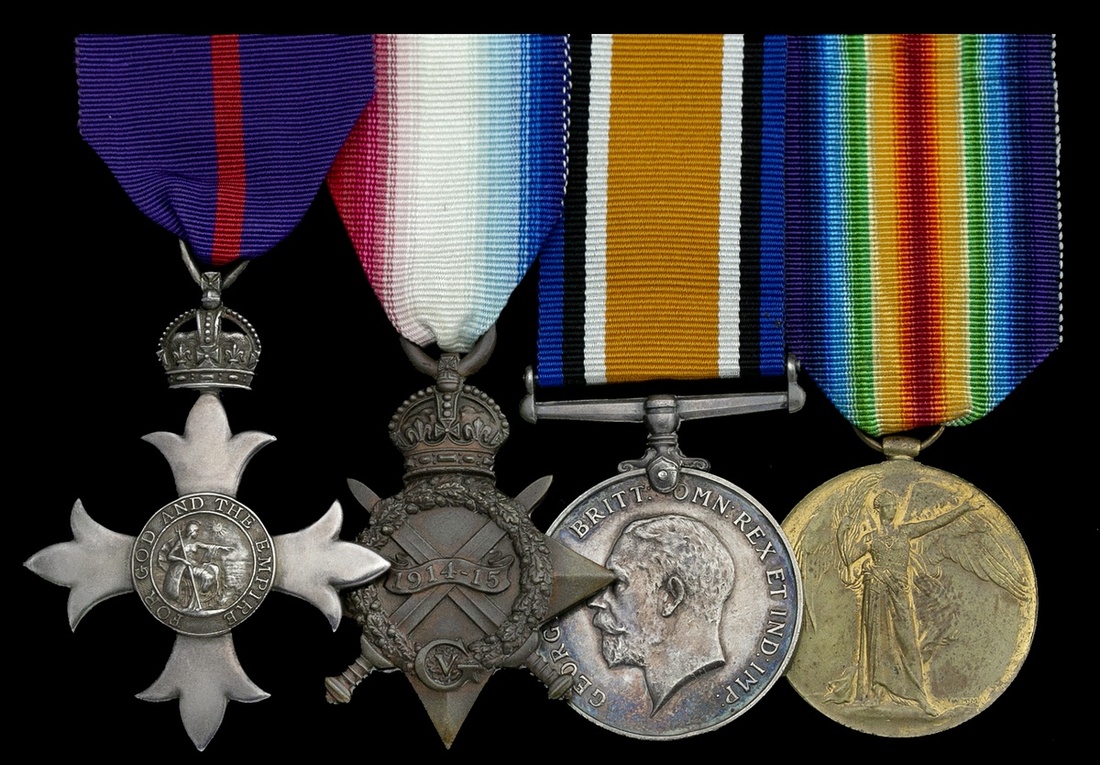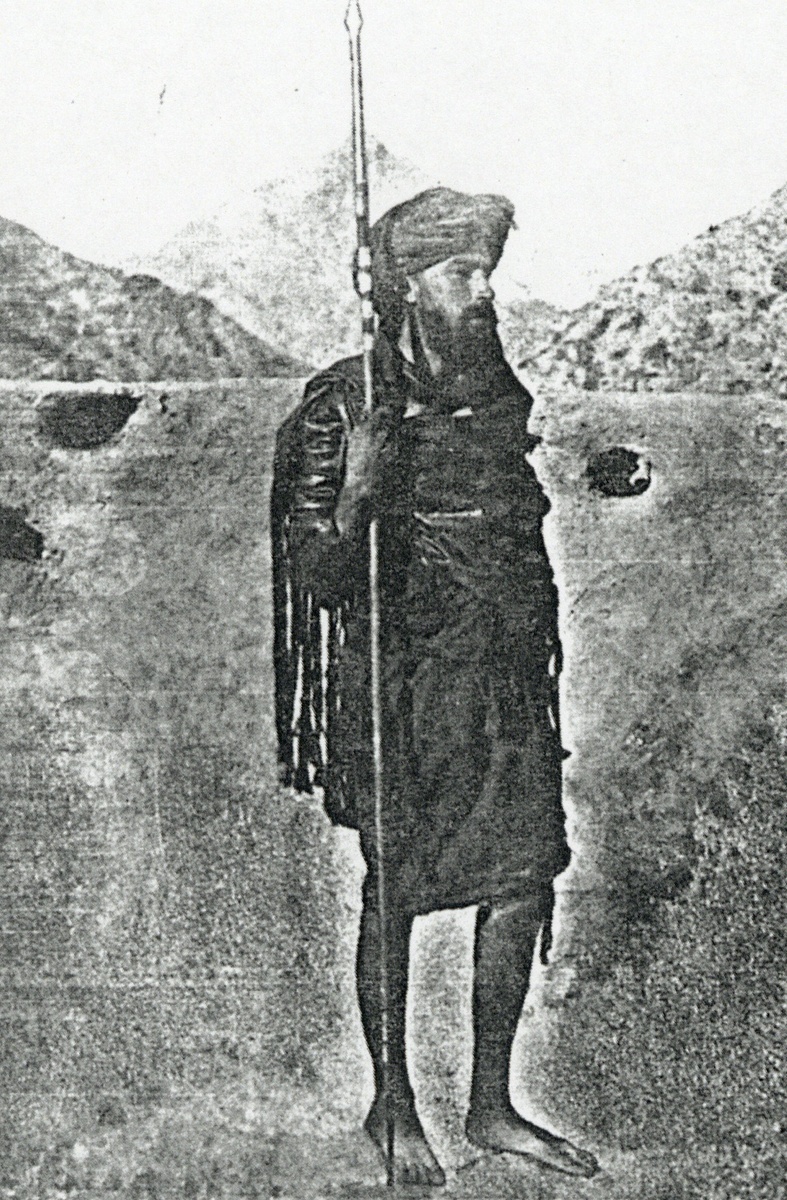Auction: 18003 - Orders, Decorations and Medals
Lot: 564
'Turkey, after wobbling for weeks on the brink of hostilities, has been pushed over by her Turco-German war-party. The whole incident shows how a strong military clique can drive an unstable government to disaster.
Turkey in Arabia will probably cease to exist - to the advantage of both parties, for her Arabian provinces are a constant drain on Turkey's resources, and Turkish rule is the curse of Arabia.
It is an ill wind that blows nobody good, and Yamen may yet snatch her independence out of this world-wide welter - whether she can use it to the best advantage is another question. In any case that "most distressful country" has my best wishes.'
George Wyman Bury, 5 December 1914; Arabia Infelix refers.
The important Great War M.B.E. group of four awarded to Lieutenant G. W. Bury, Royal Naval Volunteer Reserve, who Lawrence of Arabia revered as a 'Master Arabian'
A restless explorer, naturalist and student of Arab culture, he lived among tribes in Morocco and Yemen before single-handedly traversing the Rub' al Khali, the world's largest contiguous sand desert
In fact Bury made great advances in natural history and led the British zoological expedition to Somaliland in 1906, publishing several ground-breaking works - Leptotyphlops burii, a species of blind snake unique to the mountains of Yemen, was named after him
Turkey's entry into the Great War saw him specially employed at the Arab Bureau in Cairo. He served on General Maxwell's intelligence staff during the defence of the Suez Canal and - though gravely ill - excelled as political officer to the Royal Navy's Red Sea Patrol during the 1916 Arab Revolt
The Most Excellent Order of the British Empire (M.B.E.), Military Division, Member's 1st type breast badge, silver, hallmarks for Garrard & Co., London 1917; 1914-15 Star (Lieut. G. W. Bury, R.N.V.R.); British War and Victory Medals (Lieut G. W. Bury. R.N.V.R.), very fine or better (4)
M.B.E. London Gazette 7 June 1918.
George Wyman Bury was born at Mancetter Manor House, near Atherstone, Warwickshire, in January 1874. Educated at Atherstone Grammar School, he was commissioned 2nd Lieutenant in the 3rd Battalion, Royal Warwickshire Regiment on 9 May 1894.
In 1895 Bury developed a lifelong interest in Arab culture and history, travelling to southern Morocco and fighting with rebel tribes against the French. The following year he lived among Arab tribes in the mountainous Aden hinterland, undertaking archaeological surveys and studies in natural history. He discovered a species of blind snake, unique to the region, belonging to the Leptotyphlops family. In 1905 the snake's binomial Latin name was confirmed as Leptotyphlops burii by the Belgian naturalist George Boulenger. In his obituary of Bury, D. G. Hogarth writes:
'He had been living for some time with Arabs of the Indian Ocean littoral as one of themselves. He had penetrated wild life intimately and curiously, and was obviously prepared to go where few other Europeans might venture. He spoke the southern vernacular as an Arab, and was equipped with adequate science on all sorts of subjects qualifying him for the exploration of a savage land. The only drawback was that, as often happens with men of his singular tastes and type, his ways were not those of British imperial officials.'
From 1897 to 1901 Bury explored the Rub' al Khali (literally 'The Empty Quarter'), the world's largest contiguous sand desert, located north of Aden on the Arabian Peninsula. In 1902 he worked on the Anglo-Turkish Boundary Commission for Aden, which aimed to regularise British and Turkish spheres of influence in the region. When the fierce Kotaibi tribe attacked the British outpost at Sulaiq in October 1903, he supported military operations as a political officer. He later recounted these experiences in Land of Uz (1911). In 1905-1906, during the Somaliland campaign against the Dervishes, he accompanied the British forces as head of a zoological expedition.
Bury duly came to the attention of the Royal Geographical Society in 1908, when he proposed a voyage of discovery from Aden to the Persian Gulf. He gained the Society's support, receiving a sizeable grant, but the expedition was not a success. On setting foot beyond Aden, he was held up and robbed of all his equipment by a connection of an Arab family with which he had previously lived; he was compelled to abandon the scheme. Worse still, he contracted tuberculosis on his travels, retiring to London in 1911 for treatment at Westminster Hospital. There he met his future wife, Florence Ann Marshall, who was his nurse through his illness.
In 1911, following his recovery, Bury took Florence with him for a trek through the highlands of Yemen. They married at Hodeida in Yemen on 19 June 1913, and chose the ancient city of Sana'a, now a UNESCO World Heritage Site, for their honeymoon. As Hogarth observes, 'they must be the only European pair to have chosen inland Yemen for that purpose!' Yemen at that time was still part of the Ottoman Empire; Bury's astute and colourful observations of the region before the First World War are presented in his ground-breaking Arabia Infelix (1915).
Turkey entered the Great War on the side of the Central Powers on 28 October 1914 and Bury was immediately assigned special service with the Arab Bureau in Cairo. In January 1915, when a Turkish force of 20,000 under the German Colonel Friedrich von Kressenstein crossed Sinai and made for the Suez Canal, Bury was on the intelligence staff in that sector. British Empire forces under General Sir John Maxwell succeeded in repulsing Kressenstein's attack, but Bury's tuberculosis returned. He never flinched from his duty despite severe and agonising pulmonary strain.
In the first half of 1916, he served as political officer with the Royal Navy's Red Sea Patrol. Assigned the rank of Lieutenant in the Royal Naval Volunteer Reserve, he was stationed aboard H.M.S. Triad during operations to support Sharif Hussein bin Ali's attack on Mecca on 10 June 1916, the event that triggered the Arab Revolt. The Royal Navy's work was key to the Revolt's success, as T. E. Lawrence testified (Wemyss 1935, 359, refers):
'The Red Sea patrol-ships were the fairy-godmothers of the Revolt. They carried our food, our arms, our ammunition, our stores, our animals. They built our piers, armed our defences, served as our coastal artillery, lent us seaplanes, provided all our wireless communications, landed landing parties, mended and made everything. I couldn't spend the time writing down a tenth of their services.'
Bury's tuberculosis worsened over the summer and, by the end of 1916, he was confined to working ashore, and was given by his doctor just months to live. Placed on convalescent leave in Cairo under the care of his devoted wife, he insisted on helping the Arab Bureau for the duration of the war. In 1919 Bury and his wife went to live in Helwan, a suburb of Cairo near the ruins of ancient Memphis. He continued his remarkable studies of the Arab world, which culminated in the publication of Pan-Islam in late 1919. Containing his essays on contemporary Arab feeling towards the West, Pan-Islam makes uncomfortable reading today. Extracts include:
'The two great divisions of Islam are represented in force - the orthodox Sunnis on the littoral plain and far inland along the upland deserts, while the highlanders among the lofty fertile ranges separating these two areas and forming the backbone of the country follow the Shiah schism, being Zeidis, which of all the schismatic sects approaches most nearly to orthodox Islam and regards Mecca as its pilgrim-centre. The feeling between these two religious divisions may be compared with that existing between Anglicans and Catholics.'
'If Turkey is allowed to remain in Europe at all it will be on sufferance. The Young Turks were given every chance to consolidate their national aspirations and have achieved national suicide… a nation gets the rulers it deserves and must answer for their acts.'
'What is the use of talking about a League of Nations and the self-decision of small States if we still seek to impose our religious views on people who do not want them and encroach on the borders of other creeds? Are other people's spiritual affairs of no account, or do we arrogate to ourselves a monopoly of such matters? Both positions are untenable.'
The tuberculosis killed Bury, at the age of 46, on 23 September 1920. He is buried at the Cairo New British Protestant Cemetery, Grave 15; sold with copied research, roll entitlement, London Gazette citation, a copy of his seminal work Pan-Islam (1919), and a copy of Bertram Thomas' Arabia Felix (1932), in which T. E. Lawrence reveres Bury as a 'Master Arabian'.
Recommended reading:
Johnson-Allen, J., T. E. Lawrence and the Red Sea Patrol (Barnsely, 2015).
Thomas, B., Arabia Felix: Across the Empty Quarter of Arabia (London, 1932).
Wemyss, Lady Wester, The Life and Letters of Lord Wester Wemyss, Admiral of the Fleet (London, 1935).
Wyman Bury, G., The Land of Uz (London, 1911).
Wyman Bury, G., Arabia Infelix (London, 1915).
Wyman Bury, G., Pan-Islam (London, 1919).
Subject to 20% VAT on Buyer’s Premium. For more information please view Terms and Conditions for Buyers.
Sold for
£1,300







